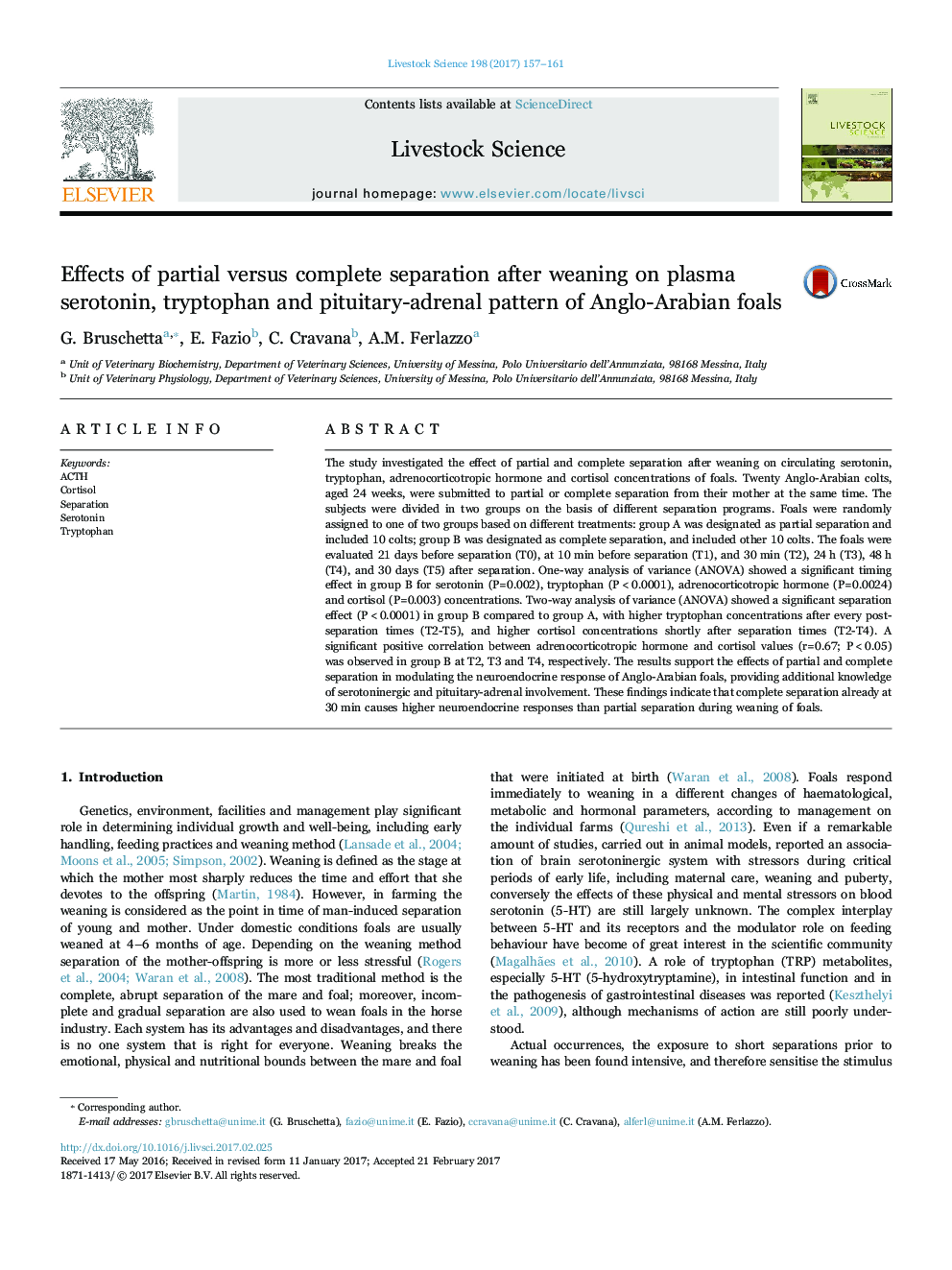| Article ID | Journal | Published Year | Pages | File Type |
|---|---|---|---|---|
| 5543139 | Livestock Science | 2017 | 5 Pages |
Abstract
The study investigated the effect of partial and complete separation after weaning on circulating serotonin, tryptophan, adrenocorticotropic hormone and cortisol concentrations of foals. Twenty Anglo-Arabian colts, aged 24 weeks, were submitted to partial or complete separation from their mother at the same time. The subjects were divided in two groups on the basis of different separation programs. Foals were randomly assigned to one of two groups based on different treatments: group A was designated as partial separation and included 10 colts; group B was designated as complete separation, and included other 10 colts. The foals were evaluated 21 days before separation (T0), at 10Â min before separation (T1), and 30Â min (T2), 24Â h (T3), 48Â h (T4), and 30 days (T5) after separation. One-way analysis of variance (ANOVA) showed a significant timing effect in group B for serotonin (P=0.002), tryptophan (P<0.0001), adrenocorticotropic hormone (P=0.0024) and cortisol (P=0.003) concentrations. Two-way analysis of variance (ANOVA) showed a significant separation effect (P<0.0001) in group B compared to group A, with higher tryptophan concentrations after every post-separation times (T2-T5), and higher cortisol concentrations shortly after separation times (T2-T4). A significant positive correlation between adrenocorticotropic hormone and cortisol values (r=0.67; P<0.05) was observed in group B at T2, T3 and T4, respectively. The results support the effects of partial and complete separation in modulating the neuroendocrine response of Anglo-Arabian foals, providing additional knowledge of serotoninergic and pituitary-adrenal involvement. These findings indicate that complete separation already at 30Â min causes higher neuroendocrine responses than partial separation during weaning of foals.
Related Topics
Life Sciences
Agricultural and Biological Sciences
Animal Science and Zoology
Authors
G. Bruschetta, E. Fazio, C. Cravana, A.M. Ferlazzo,
